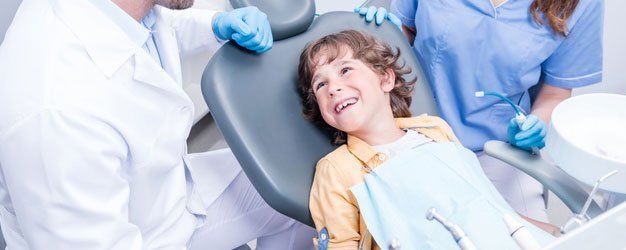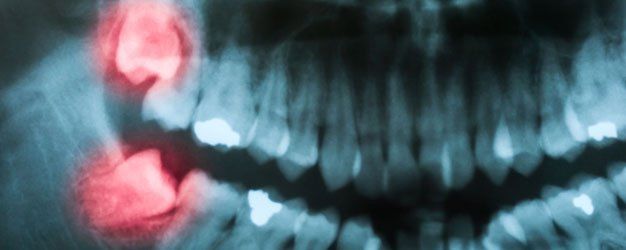Extractions
Open Since 1989 | Most Insurance Accepted | Emergency Services Available
Open Since 1989Most Insurance AcceptedEmergency Services Available
Reasons for Extracting Teeth
Although your permanent teeth can last a lifetime, teeth that have become damaged or decayed may need to be removed or extracted. Have them carefully and safely extracted at Scotia Glenville Dental Center.
Other reasons for extraction can include:
- A crowded mouth
- Gum disease
- Infection
- Risk of infection

What to Expect After an Extraction
Before removing the tooth, your dentist will give you an injection of a local anesthetic to numb the area where the tooth will be removed. At Scotia Glenville Dental Center, we also offer sedation dentistry.
If the tooth is impacted, the dentist may cut away gum and bone tissue that cover the tooth, then grasp the tooth and gently rock it back and forth to loosen it. Sometimes a tooth that is difficult to remove may be taken out in pieces.
Once the tooth has been extracted, a blood clot usually forms in the socket. The dentist will place a gauze pad and you will bite down on it for a period of time to help stop the bleeding. Sometimes the dentist will place a few stitches to close the gum edges over the extraction site.
Sometimes, the clot in the socket breaks loose, exposing the socket and causing a painful condition called dry socket. If this happens, your dentist will probably place a special dressing over the socket for a few days to protect it while a new clot forms.

Care for Your Mouth Following Oral Surgery
Do not remove the bandage from your mouth in under an hour after surgery. Change the bandage if saturated. Pay particular attention to areas marked with an asterisk*.
- Mouthwash * – Do not rinse for the first 48 hours. It may stimulate or prolong bleeding. Use ¼ teaspoon of salt in 8 ounces of warm water and rinse gently
- Bleeding - – It is natural for bleeding to increase when the anesthetic wears off. Infected teeth or teeth extracted from infected gums may bleed more. Do not be alarmed. We have found that the best control for bleeding is pressure and patience. If no cutting was done on the gums, then all bleeding will probably stop after 6 to 8 hours. If the bleeding exceeds one half (1/2) cup notify the office at once. Do not be alarmed by a red tinge to the saliva. You should use gauze pads provided as long as you are bleeding.
Bleeding is rarely a problem after the extraction of baby teeth. Children may play when fully alert. If there is any pain use the same dose of Tylenol the child usually takes
To control prolonged bleeding:
- If there are any clots hanging down or bulging out of a wound, grasp them with a bandage and pinch them off.
- Place a roll of gauze bandage or a ball of cotton over the wound and bite or hold firmly. If possible do not change bandage more often than once every 30 minutes. You may spit out excess blood and saliva.
- Bite on a wet tea bag in the same manner if above is not effective.
- Do not go to sleep with a bandage in your mouth. - Broken baby teeth roots – Quite commonly, small pieces of root break off when baby teeth are extracted. It is difficult to recognize when this happens as baby tooth roots are normally irregular and may look as if they are broken even when they are not. If it looks as if efforts at the removal of the root tips may damage the underlying permanent tooth, they may be left in place
- Children only – They should bite on gauze for 45 minutes. During the 45 minutes, they should be still and not running around
- Smoking * – Do not smoke for 4 days after surgery, as this may stimulate bleeding
- Diet * – A balanced diet is the most important factor in wound healing. A soft and liquid diet is advisable during the following 2-6 hours. You may eat two hours after surgery taking care not to bite your numb lip or tongue. Drink plenty of liquids (milk; water; bland juice that is not acidic, such as tomato, orange, grapefruit; ice cream shakes). Diabetics and patients with stomach ulcers may eat as soon as they wish. Avoid hot liquids, spices, and alcoholic beverages for 24 hours. A white covering on the gums is merely food debris and can be wiped off. Do not drink through straws
- Diet for day of surgery: cool liquids (i.e. malted milk or milkshakes), ice cream, Jell-O, pudding, yogurt, cottage cheese, apple juice and applesauce
- Next day following surgery: soft diet (i.e. scrambled eggs, mashed potato, cooked vegetables, soups (not tomato), pasta, pancakes and chicken) - Swelling * – This is to be expected after difficult extractions and surgery. To prevent some of it, place an ice bag or ice cubes in a plastic bag and towel over the affected area for 20 minutes on and 20 minutes off for the first 12 hours. Swelling should be expected to increase and change its location due to gravity
Your swelling will gradually disappear in about a week.
Apply warm moist pack to the affected area after 48 hours. Use intermittently for comfort and to reduce swelling until sutures are removed. - Hygiene – Good oral hygiene is essential to uncomplicated wound healing. Begin brushing with plain water and swallow. Repeat after each meal and at bedtime
- Do not spit for the first 48 hours
- Do not use toothpaste - Pain* – It is normal to have mild throbbing pain for about a day after a simple extraction. Before the anesthetic wears off, go ahead and begin the medication issued to you. If no prescription was given to you, take two Tylenol and two ibuprofen (at the same time) every four hours. This is almost as strong a pain control as a narcotic
If you develop an upset stomach from your painkiller, we recommend frequent small meals when taking medications
* Use a Vaseline lip balm for any soreness caused by stretching the corners of your mouth or lips - Extraction during infection – The extraction of a tooth when the face is swollen establishes drainage and removes the cause. The swelling should start to recede and you may start to feel better within a day. It may take a few days for the swelling to disappear completely
* Any marked increase in swelling, pain, or temperature may be an extension of infection and should be reported - Bony edges – After teeth are extracted, the patient may feel hard projections in the wound and think they are tiny pieces of tooth. This is jawbone which held the teeth. It will be covered by gum as healing progresses
After single or multiple extractions, the bone which held the teeth will shrink. The shrinkage process lasts from 3 to 4 months until the jaw reaches its final shape. In some cases where the mouth is being prepared for dentures, this bone is cut off to speed up the process. The shrinkage can be irregular so that sharp spots or chips will appear where there were none before. If a bone chip or sharp spot is very uncomfortable, or if you are going to get a denture soon, call for an appointment. - Stitches – If not self-dissolving, they will be removed painlessly without the need of anesthetic within two weeks
- Impacted wisdom teeth – Following their removal, it may be difficult to open the mouth fully for a few days. The tightness normally increases overnight. There may also be swelling, difficulty in swallowing, and pain which may feel like an earache
After removal of lower impaction, a small piece of swollen cheek will frequently project between the last upper and lower teeth. Do not bite it and it will eventually shrink away - Do not scuba-dive for two weeks after the surgery
* - In case of uncontrollable bleeding, a sudden rise in temperature, or marked increase in pain or swelling, call this office at (518) 377-4431. We have a 24-hour telephone service. If you are concerned about the progress of your recovery, please call the office.
Regular daily activities may be followed. Avoid excess exertion of any type. Do not bend over. If you need to lower your body, bend your knees keeping your head upright. Athletics and long exposure to the sun should be avoided for the first three days after surgery. Also, no swimming.

Same-Day Emergency Appointments
Same-day emergency appointments and after-hours emergency visits are available. If you are in need of dental assistance, call us right away.
Call
(518) 377-4431
(518) 377-4431
to schedule your appointment!


Share On: